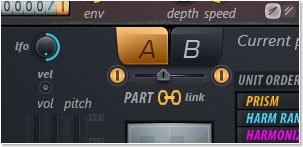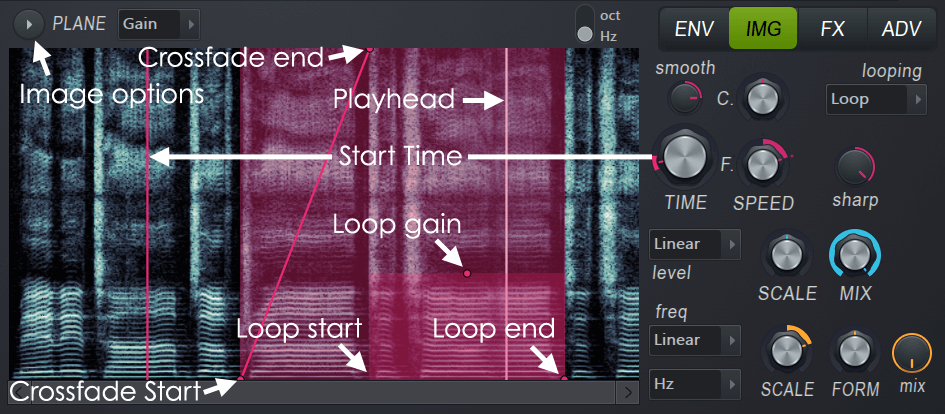
Each operator is an oscillator with an amp envelope and the operators can be arranged in different ways (algorythms). Sylenth1 is an example of a synth that is only subtractive.įM synthesis is where you have multiple operators that modulate each others frequencies. So you have oscillators which run into a filter that are then modulated by a filter envelope and you have an amp envelope. Subtractive synthesis is where you take a harmonically rich waveform and remove frequencies with a filter. But if the price doesn't matter and you just wanna pick one synth and use it forever for this genre, serum should do you just fine.

HARMOR VST VS FREE
If you're skint, just learn sound design in the free version of vital, since vital is like serumLite and should do everything you want when combined with the distortion and saturation in your DAW. (Eastwest composercloud is a great resource if you're wanting to use sampled violins, pianos, asian strings, etc) That last song you linked to gets a lot of its character from the strings, which are sampled and not synthesized. Most of what seems to characterize this genre is the distortion, saturation everywhere, and tempo. But these days, I am doing a lot of distortion with fx procession outside of the synth anyway, in an ableton fx chain. That's what kept me away from vital, is not liking the native distortion and fx in general. If you want to go with a fancy VST though, literally any will work for this, but you might enjoy serum the most because of its native distortion being great. Most of what I hear is supersaws, basic-ass pulseses, or basic-ass saws. You could do all of this with just stock ableton plugins like operator or wavetable. I suppose it's the one I'd pick as the most unique.All of this sound design is suuuuupppperrr basic, TBH. Its semi-modular nature is a huge bonus, you can do all sorts of weird stuffs filtering modulation signals / FM modulators, fantastic synth. It's proudly digital yet can go into analogue territories effortlessly.

I feel like Bazille is the underrated gem of the bunch, like the other one I listed it has a distinctive soundprint that makes FM/PD sing. Regarding synths, I solely rely on a couple of u-he ones (Bazille and Hive 2), NI Razor and sometimes Plogue's Chipsynths. I've used it for years, yet I'm still unsure of how it really works, ah! Similarly, I've used Soundhack's ++delay a lot in the past : great texturizer, somehow akin to Live's GrainDelay(which is IMO Live's best native effect). Permut8 is pretty amazing, I love under-driving it to exaggerate its sonic character (truncation artefacts are stronger that way), then compensating with its colored output trim. There are definite improvements that could be made to make an already amazing synth, god-like. It's kind of a shame a successor to the synth hasn't materialized somewhere.

I think that if this feature was improved to a near 1 to 1 conversion from the source sound into the additive engine that Harmor would be the best vst ever. In the process it loses his 'panning information' and It makes your sample mono, and usually sounds worse than the sample until you've thrown on some effects to widen the stereofield again. Basically it takes the sound, and then recreates it in the engine with lots of sine waves in order to be able to use the features in harmor on top of it. The built in synthesis engine still sounds good to great, however the imaging feature could be better, as it converts your sound into a synth you can play in the vst itself. My biggest gripe is that harmor is in need of a 'harmor 2', as its audio fidelity can be lacking depending on what you're trying to do. You basically can do almost anything with harmor. Especially when it comes to layering a sound or really understanding how awesome its filters are, or the absurd number of filters you can create, with its custom filter feature. Many of the best features in Harmor are hidden kinda deep within it behind a few menus, where my mind was constantly blown by the possibilities, where you can make incredibly unique sounds 10 times faster than you'd be able to make them with a subtraction synth. However once you start to understand how it works, it starts to blow your mind with the level of control you have. At first it just seems like an overly complicated subtractive synth.

What is the most unique vst for you, and why? The definition/criteria for unique in this case can be whatever you want it to be.įor me I'd say it is the additive synthesizer Harmor, and it's been so for years, though I haven't really tried many new plugins since 2018.


 0 kommentar(er)
0 kommentar(er)
